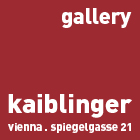Original paintings & sculptures
Nitsch Hermann
Vienna *1938 - †2022 Mistelbach
Hermann Nitsch is an action artist and one of the most important representatives of Viennese Actionism. Nitsch calls his stirring productions full of associations Orgien-Mysterien-Theater (Orgy-Mystery-Theatre) - rituals full of rage, force and elemental force.
After graduating from the Graphische Lehr- und Versuchsanstalt in Vienna, Nitsch took up a position as commercial artist at the Technical Museum in 1957. A few years later, the first painting actions and also the idea of the Orgien-Mysterien-Theater emerged, which from then on kept him constantly occupied and in which all his efforts were concentrated. In the early 1960s, his action work, which was held in public in Vienna, led to constant confrontations with the authorities and several weeks in prison, which prompted the artist to move to Germany in 1968.
Following the great success of the Orgien-Mysterien-Theater in the late 1960s in the USA and Germany, Nitsch carried out actions in many European and North American cities during the 1970s. In 1971 he succeeded in purchasing the Lower Austrian castle of Prinzendorf from the possession of the church, where Nitsch also realised his idea of music in the course of large-scale actions. Noise orchestras, chanting choirs and electronically amplified instruments were used in the actions. Nitsch interpreted life as passion, the painting process as condensed life and thus as the epitome of passion.
This central part of his work, the Orgien-Mysterien-Theater, captures all the senses and sometimes requires strong nerves. Nitsch binds naked people blindfolded to crosses, blood is poured into their mouths and slaughtered pigs are tied to their bodies. Helpers in sullied white robes stuff intestines into carcasses, dig around in them up to the elbow and handle organs and knives. Blood and intestines flow in masses.
Nitsch also paints with colours, this too is a spectacle. The abstract bulk pictures can take on gigantic formats. He often coordinates whole crowds of assistants in white coats. Paint is poured in buckets and distributed with hands, feet or broom, while photographers and spectators crowd around the action.
His painting actions, the Orgien-Mysterien-Theater and his Schüttbilder are celebrated worldwide and are represented in renowned collections. In 2005 Nitsch received the Golden Medal of Honour of the City of Vienna, as well as the great Austrian State Prize for Fine Arts.
The Museo Nitsch in Naples and the Hermann Nitsch Museum in Mistelbach, Lower Austria, are dedicated to his work. In 2009, the Nitsch Foundation was founded with the aim of communicating and documenting Nitsch's work.






